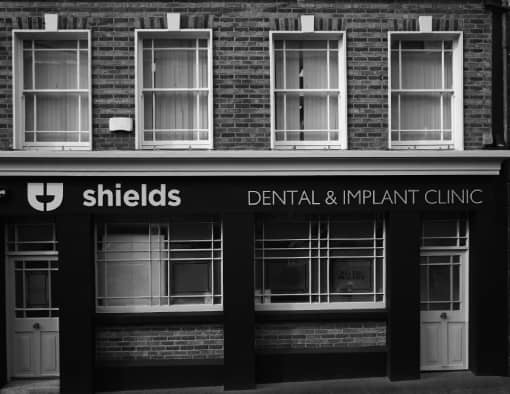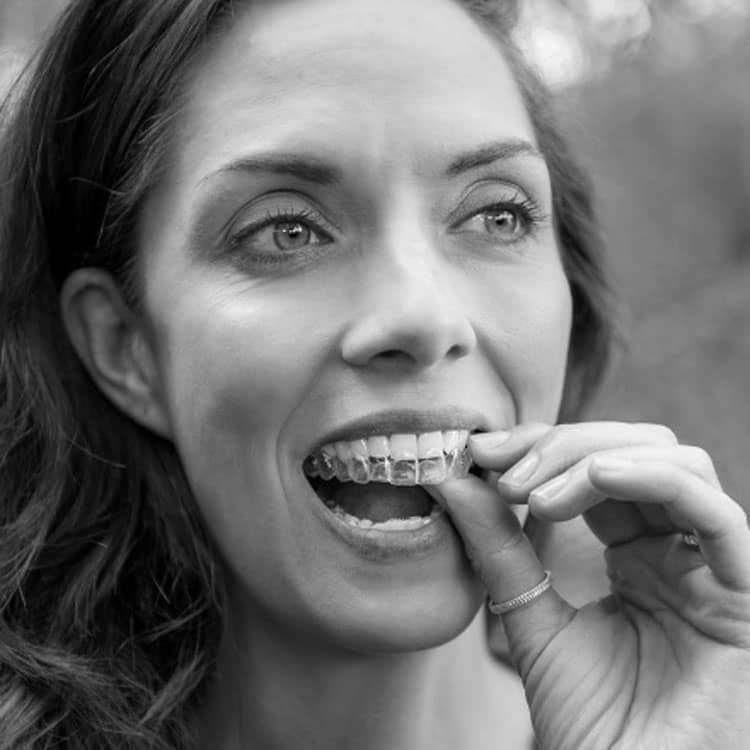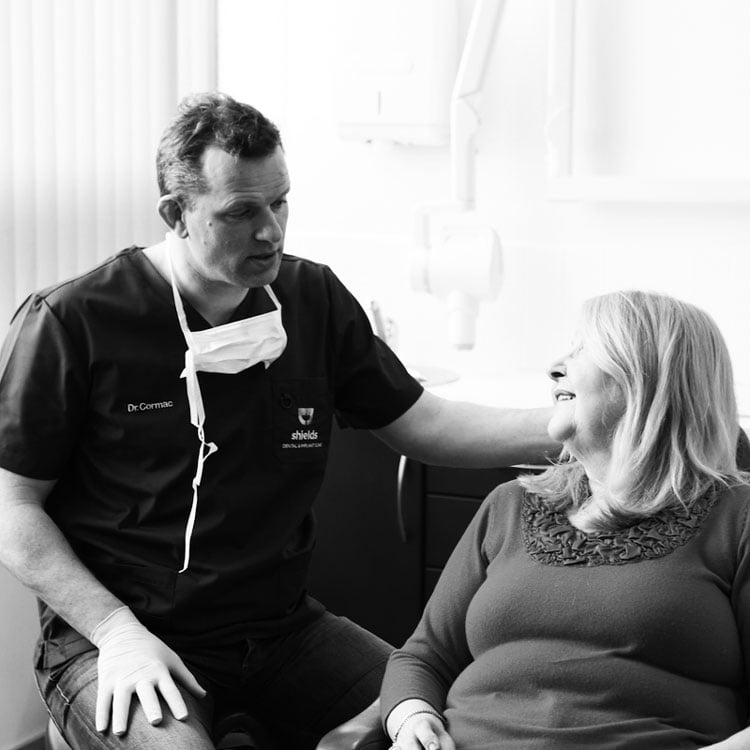Revamp your smile
and restore your confidence
with veneers.
A dental veneer is a thin layer of porcelain that is made to fit over the front surface of a tooth – just like how a false nail is fitted over a natural fingernail.
A veneer is essentially designed to change your tooth’s shape, size and colour. They are as strong and durable as the original enamel.
Another technique is composite bonding, whereby a dentist can achieve the same effect by adding layers of white filling material to the front surfaces of the teeth.

When might you need a veneer?
- If you have gaps between your teeth – veneers can be used to close small gaps when orthodontics (braces) are not suitable.
- To bring a tooth that is slightly out of position into alignment with the others.
- When your teeth are irregularly shaped
- Where your teeth are broken or chipped – The thin porcelain layer covers the entirety of the front of the tooth, with a thicker section replacing the damaged part.
- If your teeth have become discoloured – This can happen from procedures such as root canals or fillings. Veneers of precisely determined shades of porcelain are used to improve the appearance of a single discoloured or stained tooth, or to brighten the front teeth, particularly the upper ones.
Would you like to know more about veneers?
Have a question about a treatment, want to know how you can spread the cost of treatment, need to book an appointment or would just like more information? Our treatment coordinators are available for free consultations in person at one of our conveniently located practices.

FAQs.
Invisible item
What are the alternatives?
Natural-coloured filling material can be used for minor repairs to front teeth. This is excellent where the tooth supports the filling, but may not work so well for broken tooth corners. There will always be a join between the tooth and the filling material. Crowns are used for teeth that need to be strengthened—either because they are broken, have been weakened by a very large filling, or have had root canal treatment.
How long will a veneer last?
Veneers should last for many years, but they can chip or break, just as your own teeth can. Your dentist will tell you how long each individual veneer should last. Small chips can be repaired, or a new veneer fitted if necessary.
How are teeth prepared for a veneer?
Some of the shiny outer enamel surface of the tooth may be removed, to ensure that the veneer can be bonded permanently in place. The amount of enamel removed is tiny and will be the same as the thickness of the veneer to be fitted, so the tooth stays the same size. A local anaesthetic (injection) may be used to minimise discomfort, but often this is not necessary. Once the tooth has been prepared, the dentist takes an ‘impression’, which is given to the dental technician, along with any other information required to make the veneer. The colour of the surrounding teeth is matched on a shade guide to ensure the veneer looks entirely natural.
How long does it take?
Will I need a temporary veneer between visits?
Probably not, because the preparation of the tooth is so slight. The tooth looks very much the same after preparation, but feels slightly less smooth.
What happens after the veneer is fitted?
Only minor adjustments can be made to the veneer after fitting. It is usually best to wait and become accustomed to it before any changes are made. Your dentist will probably check and polish it a week or so after fitting, to make sure that you are happy with the treatment.
How do I maintain my veneers?
It is very important to maintain your veneers by visiting the dental hygienist every couple of months to prevent decay and gum issues. Such issues will shorten the lifetime of your veneers.
What are the disadvantages of veneers?
- One aspect of veneers is that they cannot change colour after they’re created. Therefore, even if your smile’s colour changes over time, your veneer colour won’t change. However, you can minimise this problem by staying current with your dental appointments.
- Veneers are also more vulnerable to cracking and chipping compared with fillings or crowns, as they are inherently delicate. Therefore, they may not be the best option for you if you have a bad habit of biting your nails, chomping on ice or grinding your teeth.
- Veneers also may not be a good idea if you’ve got a history of weak enamel or gum disease.
What is the cost of veneers?
You can view the price of veneers here.
Our
treatments.
From the regular check-up to the specialist and advanced treatments that are needed throughout life, we always use state-of-the-art equipment and latest recommended techniques.

Open 7 days*
Highly trained specialists and dentists
Your safety is guaranteed in our hands
Payment options
Technically advanced
Convenient locations
No obligation consultations
Find out what makes us different.
Recent Reviews.

SCR, Limerick, Shields Dental & Orthodontic Clinic

Castletroy, Limerick, Shields Dental & Orthodontic Clinic

Roscrea, Tipperary, Shields Dental & Orthodontic Clinic

Blackrock, Dublin, Shields Dental & Orthodontic Clinic
Convenient
locations.
You don’t have to go to Beverly Hills to look good, you can go local. In convenient locations in Limerick, Castletroy, Roscrea and Blackrock Dublin. Comfortable but advanced, friendly but professional. Click on your preferred location in the menu or use the arrows to discover more.
For the
smile you have
always wanted.
Use our FREE consultation service to speak to one of our Treatment Coordinators, who give you information about how we can help, without any financial commitment.
Most importantly it helps to build your confidence in starting your journey with Shields to the smile you have always wanted.
We’ll discuss with you what you would like to achieve with your dental health and the appearance of your smile, answer any questions and listen to any problems you may have had with your teeth in the past.








